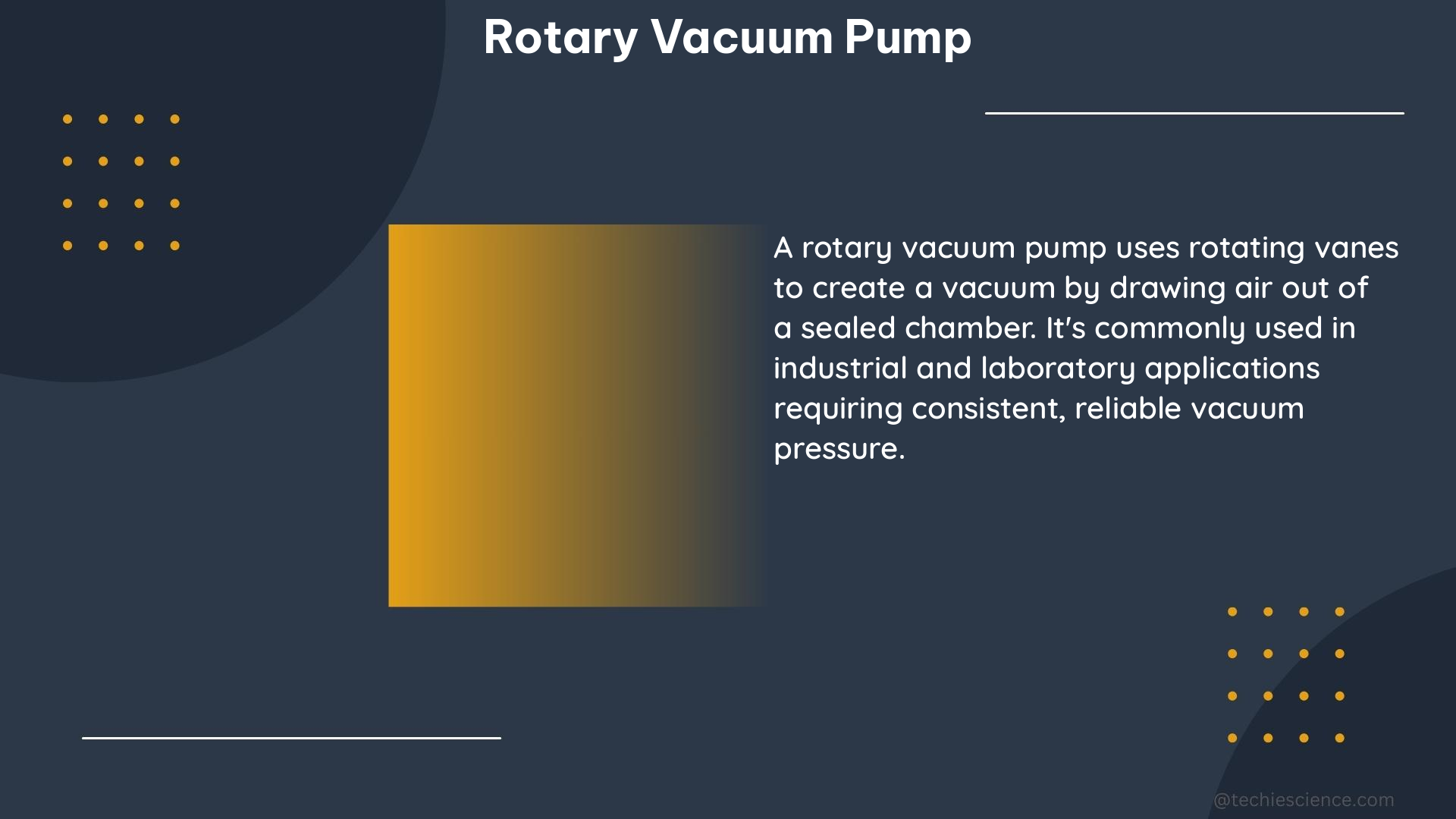Rotary vacuum pumps are a versatile and efficient type of vacuum pump that are widely used in various industrial and scientific applications. These pumps are known for their ability to achieve high vacuum levels, reliable performance, and ease of maintenance. In this comprehensive guide, we will delve into the technical details and specifications of rotary vacuum pumps, providing you with a thorough understanding of their capabilities and how to optimize their performance.
Pumping Speed and Vacuum Rating
The pumping speed of a rotary vacuum pump is a crucial parameter that determines its efficiency in removing gas molecules from a vacuum chamber. Typically, rotary vane pumps can achieve pumping speeds ranging from 2 to 120 cubic feet per minute (CFM) or 4 to 20 cubic meters per hour (m³/h). This wide range allows for the selection of a pump that can meet the specific requirements of your application.
When it comes to vacuum rating, a well-designed rotary vane pump can reach maximum vacuum levels of 1 micron, which is equivalent to 1/1000 of a Torr or 0.133 Pa. This level of vacuum is suitable for a wide range of applications, from scientific research to industrial processes.
Air Flow and Power Consumption

The air flow generated by a rotary vane vacuum pump is another important factor to consider. These pumps can produce an average airflow of 4 to 35 CFM (7 to 59 m³/h), allowing for efficient gas removal and maintaining the desired vacuum level.
Regarding power consumption, a typical rotary vane vacuum pump requires between 1 to 3 kilowatts (kW) of electrical power to operate. This energy requirement is relatively low compared to other types of vacuum pumps, making rotary vane pumps a cost-effective choice for many applications.
Noise Level and Weight
The noise level generated by a rotary vane vacuum pump is an important consideration, especially in applications where noise control is a priority. These pumps can produce sound pressure levels ranging from 60 to 80 decibels (dB), which is generally within acceptable limits for most industrial and laboratory settings.
The weight of a rotary vane vacuum pump can vary significantly, depending on the size and capacity of the pump. Typically, these pumps can range from 20 to 200 kilograms (kg) in weight, making them relatively easy to install and transport.
Oil Capacity and Operating Temperature
Rotary vane vacuum pumps require lubrication and cooling to maintain optimal performance. The oil capacity of these pumps can range from 0.5 to 5 liters (L), ensuring adequate lubrication and heat dissipation during operation.
The operating temperature range for rotary vane vacuum pumps is typically between 20 to 50 degrees Celsius (°C). This wide temperature range allows for the pumps to be used in a variety of environmental conditions without the risk of damage or reduced efficiency.
Service Life and Maintenance
With proper maintenance and care, a rotary vane vacuum pump can have a long service life, often lasting for several years. Regular oil changes, filter replacements, and routine inspections are essential to ensure the pump’s longevity and continued reliable performance.
It is important to follow the manufacturer’s recommended maintenance schedule and use only approved lubricants and replacement parts to maintain the pump’s optimal condition. Proper maintenance not only extends the pump’s service life but also helps to maintain its high vacuum rating and pumping speed.
Conclusion
Rotary vacuum pumps are a versatile and efficient choice for a wide range of applications, from scientific research to industrial processes. By understanding the technical specifications and capabilities of these pumps, you can select the right model for your needs and ensure optimal performance and reliability.
Whether you’re a DIY enthusiast, a laboratory technician, or an industrial engineer, this comprehensive guide has provided you with the essential information to make informed decisions about rotary vacuum pumps. Remember to always consult with the manufacturer or a qualified professional for specific recommendations and guidance on the installation, operation, and maintenance of these essential vacuum components.
References
- Pumping Speed Measurement of the Rotary Vane Vacuum Pump by Using Numerical and Experimental Approaches
- Rotary Vane Vacuum Pumps: The Definitive Guide
- Chapter 4: Rough Vacuum Regime

The lambdageeks.com Core SME Team is a group of experienced subject matter experts from diverse scientific and technical fields including Physics, Chemistry, Technology,Electronics & Electrical Engineering, Automotive, Mechanical Engineering. Our team collaborates to create high-quality, well-researched articles on a wide range of science and technology topics for the lambdageeks.com website.
All Our Senior SME are having more than 7 Years of experience in the respective fields . They are either Working Industry Professionals or assocaited With different Universities. Refer Our Authors Page to get to know About our Core SMEs.